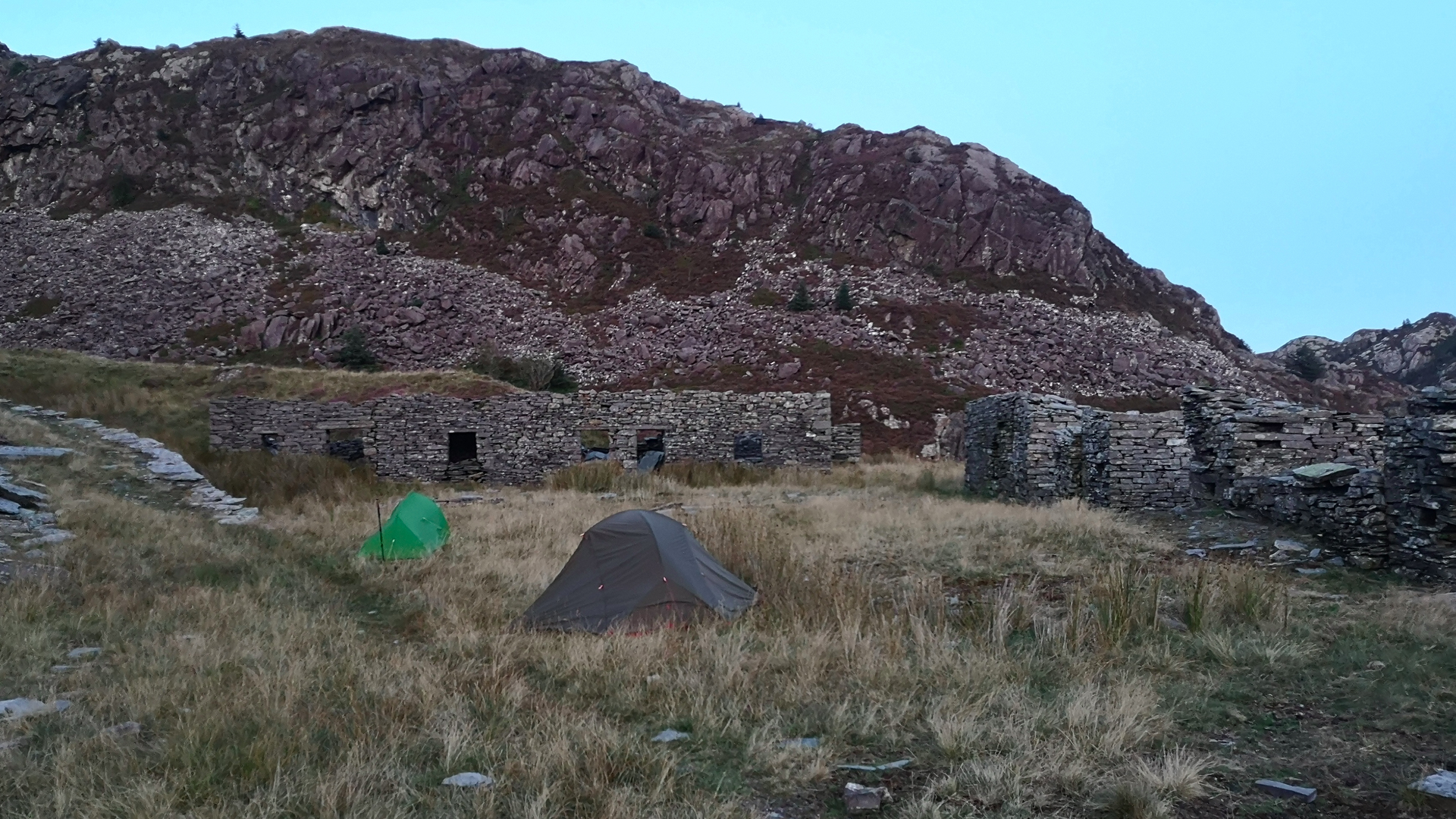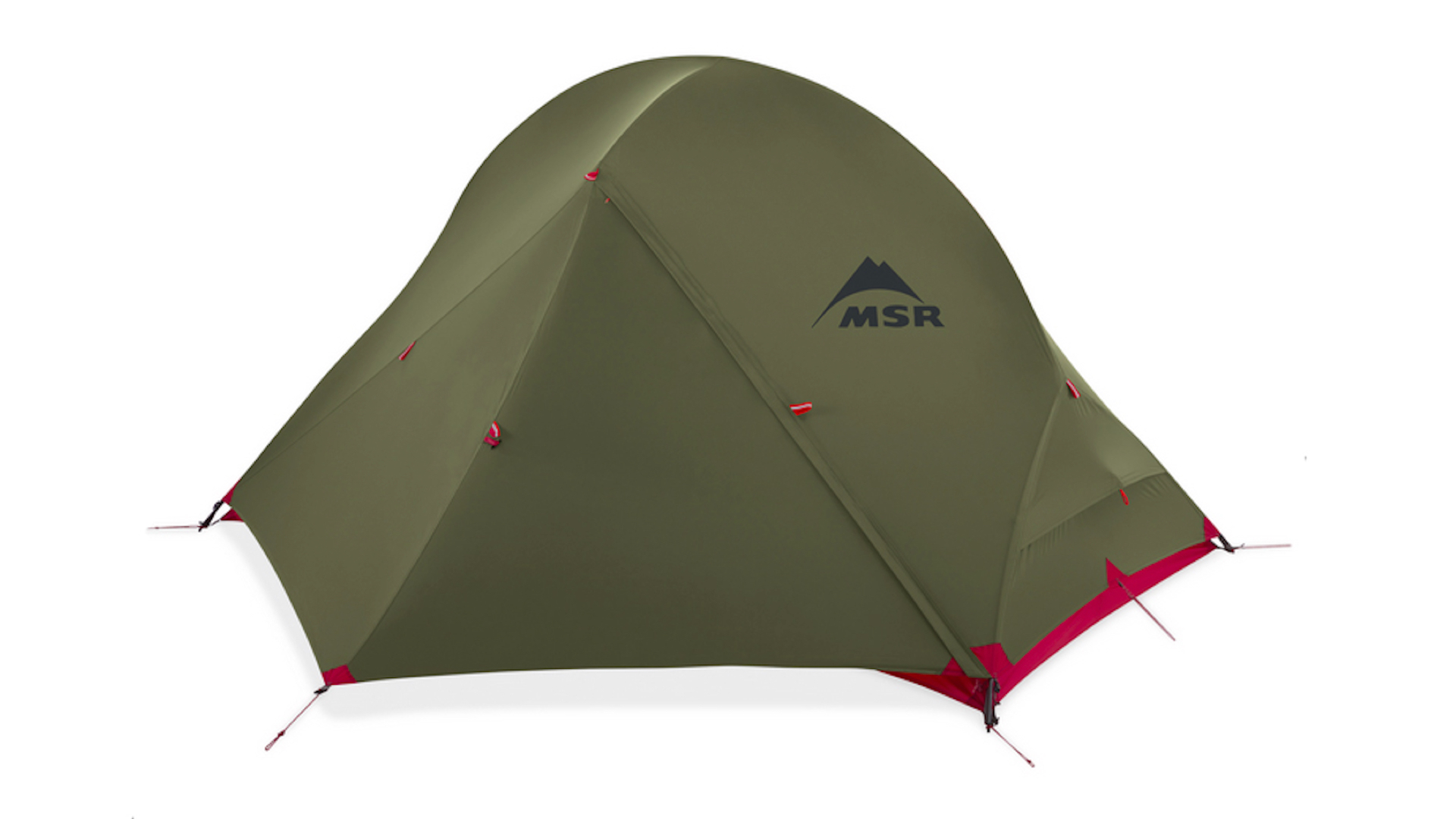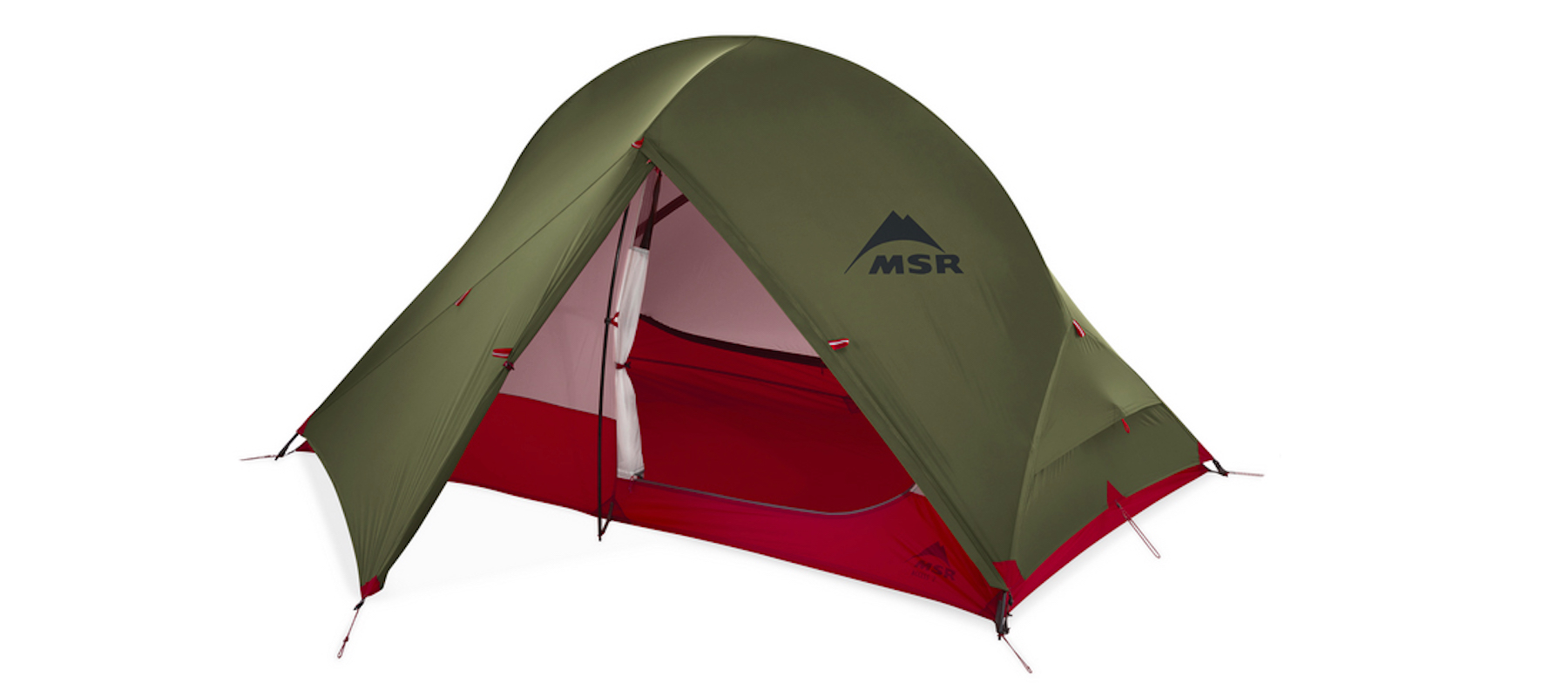Advnture Verdict
Tipping the scales at well under 2kg (just over 4lbs), this tent weighs the same as many three-season backpacking tents. But it’s far sturdier, with the ability to handle winter weather, thanks to a robust pole set and weatherproof fabrics that can cope with high winds and snow loading. That makes it a great choice for hardy campers who like to venture out in the depths of winter. It only really reaches its limits in the most exposed locations, but at lower altitudes it’ll stand up fine.
Pros
- +
Great headroom
- +
Versatile enough for year-round use
- +
Lightweight for a four-season tent
Cons
- -
Expensive
- -
Pitches inner first
- -
Not sturdy enough for “proper” mountaineering use
You can trust Advnture
MSR Access 2: first impressions
If you’re keen to camp throughout the year, you want a four-season tent that will be both warm enough and strong enough for winter conditions. Usually, that means looking at fully geodesic or tunnel-style tents designed for full-on mountaineering use. Inevitably, these tents are heavy and expensive.
• List price: $660 (US) / £735 (UK)
• Style: Freestanding dome
• Weight: 1.86kg / 4lb 1oz
• Waterproofing: 1,200mm HH Xtreme Shield polyurethane & silicone fly; 3,000mm HH Xtreme Shield groundsheet
• Vestibules: 2
• Pack size: 46cm x 15cm / 18in x 5.9in
• Compatibility: Two-person shelter for four-season use, including backpacking and ski touring
The MSR Access 2 solves at least one of those problems, weighing in at under 2kg (or just over 4lb). That’s a great base weight for an all-season, two-person, double-wall tent. And though its price tag of $660 or £735 isn’t exactly small change, it is cheaper than something like a Hilleberg, while being similarly versatile enough to use year-round, at least in cooler climates like the UK, northern Europe and the Pacific Northwest USA. It works equally well for ski touring, wild camping and summer mountaineering. That makes this a very viable “quiver of one” tent that will likely see a lot of use, increasing its effective value for money, and earns it a spot in our roundup of the best four-season tents.
The design essentially sits halfway between a traditional mountaineering tent and a lightweight backpacking shelter. It’s a sturdy freestanding design that makes use of two crossing Easton Syclone poles, with a double-wall construction. You also get two entrances and two porches or vestibules, with steep walls and overhead ridge poles to resist snow loading. This also results in excellent interior headroom, and decent internal proportions that give good liveability for two people. The porches are big enough to cook in or stash wet gear, while the symmetrical footprint means you can easily “top and tail” two sleeping pads together for more space.
On paper, specifications balance overall weight with durability and weatherproof performance. The fly sheet is made from 20 denier ripstop nylon with a Durashield treatment, giving it a 1,200mm hydrostatic head (HH) rating for waterproofing. The groundsheet is a thicker 30 denier ripstop nylon with a 3,000mm HH rating. The inner is mostly 20 denier fabric, with small mesh ventilation panels at the top of the doors. While there are plenty of other tents on the market with higher HH figures than that, MSR’s designers point out that while a thicker PU or silicone coating may increase the HH rating, this can also adversely affect the fabric tear strength – a valid point. The bottom line is that on test, we stayed perfectly dry all night long and the tent held up well, even in some very wet and windy conditions.
MSR Access 2: in the wild

We’ve read some (mostly US-based) reviews from rival gear sites that have been critical of the MSR Access series, arguing that it isn’t strong enough to resist winds at higher elevations. They’re undoubtedly right, but then this isn’t designed to be a true mountaineering tent. Pitching it at 7,000ft on the side of Mt Baker isn’t really a fair test. MSR themselves market this as a lightweight ski touring tent, which is a better indicator of its limits. Essentially, it’s designed to offer four-season performance at 3-season weight – think of it as a sturdier backpacking tent for year-round use in cold climates.
With that in mind, we tested the Access 2 on a number of winter wild camps in the hills and mountains of Snowdonia, North Wales – typically, around 2,500ft – and in those scenarios it proved to be a cosy and protective shelter. It’s light and packable enough to stash in a 40L daypack, but quick and easy to pitch.
Admittedly, it needs to be set up inner-first, which isn’t optimal if you’re pitching in the rain, but the process is at least very intuitive, with symmetrical poles that don’t need to be matched to specific corners.
All the latest inspiration, tips and guides to help you plan your next Advnture!

And once you’re inside, it feels warm and sturdy, with enough practical features to make it a comfortable place to spend the night. We particularly liked the great headroom, which is even generous enough to allow six-footers to sit up straight.
Obviously, it doesn’t feel quite as cavernous as a tunnel tent, but for those used to backpacking-style dome or semi-geodesic designs, it will all feel very familiar. You can fit two 60cm sleeping mats or pads side by side, and the rectangular footprint makes it easy to “top and tail”. Put it this way: one of our test trips involved a long-suffering partner and a somewhat soggy Border Collie, and while that proved to be a fairly cosy night, it wasn’t uncomfortable. The two doors and vestibules ensure easy entry and exit, while providing ample space to cook or store wet gear.
A mostly fabric inner with minimal mesh ensures the tent doesn’t feel drafty, ideal for cold conditions. The flipside is that moisture management isn’t quite as good as airier, better-ventilated tents, though this can be mitigated by cracking open the double-zippers on the flysheet doors.
Our only real gripe is with the price. It ain’t cheap by any stretch of the imagination, and the UK price point is even a bit steeper than the equivalent is US dollars. But as with most things, you get what you pay for, and this is undoubtedly a well-built tent. There are also much more expensive tents on the market – just look at the price of the Hilleberg range.
An outdoors writer and editor, Matt Jones has been testing kit in the field for nearly a decade. Having worked for both the Ramblers and the Scouts, he knows one or two things about walking and camping, and loves all things adventure, particularly long-distance backpacking, wild camping and climbing mountains – especially in Wales. He’s based in Snowdonia and last year thru-hiked the Cambrian Way, which runs for 298 miles from Cardiff to Conwy, with a total ascent of 73,700 feet – that’s nearly 2½ times the height of Everest. Follow Matt on Instagram and Twitter.


